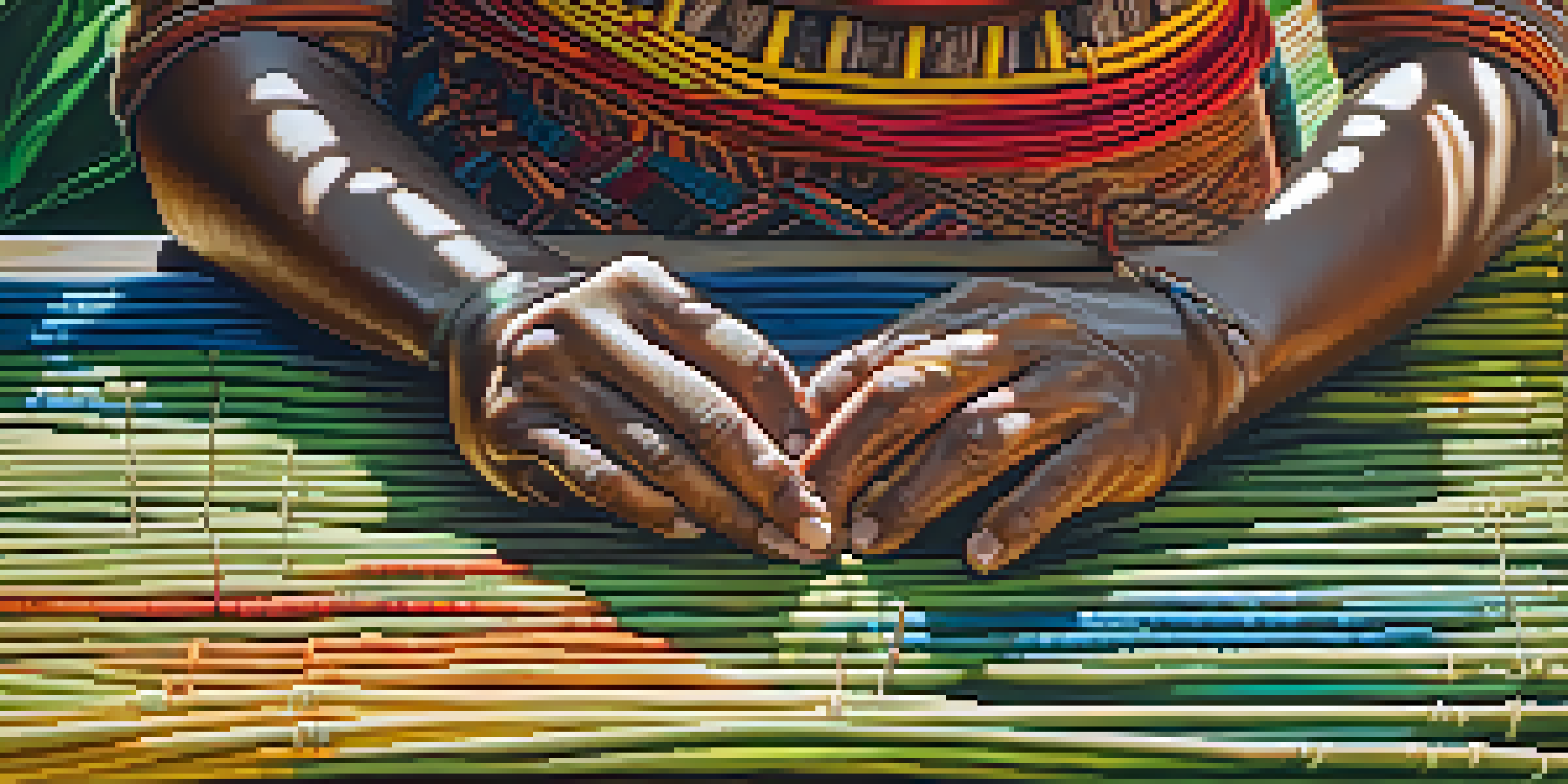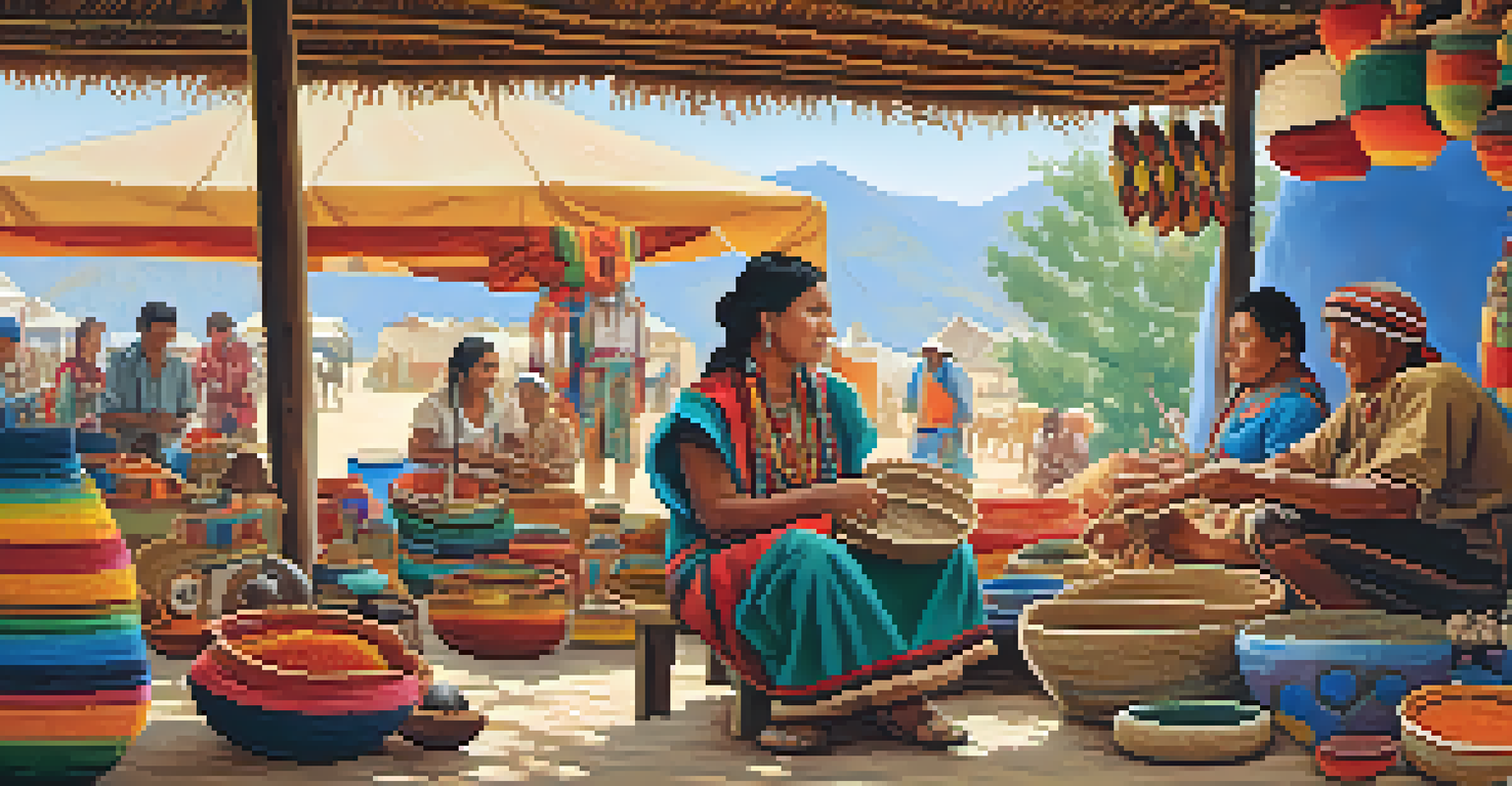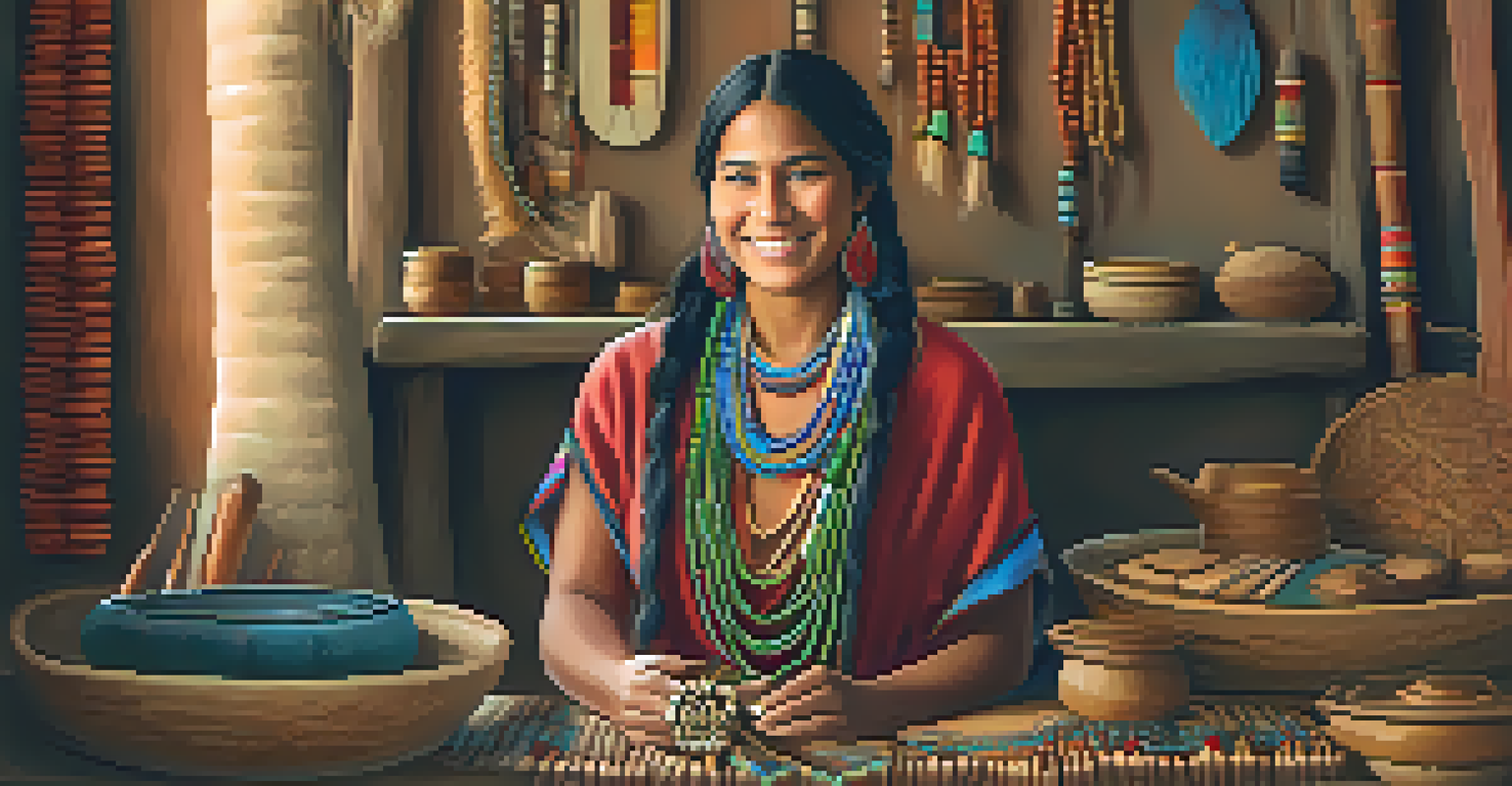From Amazon to Art: Indigenous Handicrafts of Brazil

The Rich Tapestry of Indigenous Cultures in Brazil
Brazil is home to a diverse array of Indigenous cultures, each with unique traditions and art forms. These communities have thrived for centuries, often drawing inspiration from the lush Amazon rainforest that surrounds them. Their handicrafts reflect not only their artistic abilities but also their deep connection to nature and spirituality.
Art is the most beautiful of all lies.
From intricate beadwork to vibrant textiles, Indigenous handicrafts showcase the skills passed down through generations. These artisans often use natural materials sourced from their environment, such as seeds, fibers, and wood, which imbue their creations with both beauty and meaning. Each piece tells a story, preserving the cultural heritage of its maker.
In a world increasingly driven by technology and mass production, these handicrafts stand as a testament to the enduring power of traditional artistry. They remind us of the importance of cultural diversity and the value of sustainable practices in preserving our planet's resources.
The Symbolism Behind Indigenous Handicrafts
Indigenous handicrafts are not just beautiful objects; they are rich in symbolism and cultural significance. Many designs are deeply connected to the spiritual beliefs and myths of the communities that create them. For instance, certain patterns may represent animals that hold spiritual meanings or elements of nature that are revered.

Artisans often incorporate symbols that tell stories of their ancestors or express their relationship with the earth. This connection to ancestry is vital in maintaining cultural identity amidst modern challenges. By understanding the symbolism behind these crafts, we gain insight into the worldview of Indigenous peoples.
Celebrating Indigenous Artistry
Indigenous handicrafts reflect a deep connection to nature, spirituality, and cultural heritage, showcasing the artistry of communities in Brazil.
When purchasing these handicrafts, supporting the artisans means acknowledging and respecting their cultural narratives. Each piece is a bridge between the past and present, offering a glimpse into the values and traditions that shape Indigenous life.
Materials and Techniques: Nature’s Gifts
The materials used in Indigenous handicrafts come primarily from the Amazon rainforest, showcasing a sustainable relationship with nature. Artisans utilize resources like palm fibers, clay, and colorful natural dyes, ensuring that their crafts are eco-friendly. This practice not only sustains their communities but also promotes environmental stewardship.
Culture is the widening of the mind and of the spirit.
Techniques vary widely among different tribes, with each community having its own unique methods passed down through generations. For example, some artisans are known for their weaving skills, while others excel in pottery or carving. These techniques reflect a profound understanding of their materials, enabling them to create functional and decorative art.
By using local materials, Indigenous artisans contribute to the local economy and preserve their cultural heritage. This commitment to traditional craftsmanship allows them to maintain their identity in a rapidly changing world.
The Role of Women in Indigenous Handicrafts
Women play a crucial role in the creation of Indigenous handicrafts, often being the primary artisans in their communities. They are responsible for weaving, sewing, and crafting, passing down their skills to younger generations. This not only empowers women but also strengthens community bonds and cultural continuity.
Through their crafts, women express their creativity and share their stories, often using their art to address social issues within their communities. Many women artisans are now also advocating for their rights and the rights of their communities, using their work as a platform for change.
Empowering Women Through Craft
Women artisans play a pivotal role in creating handicrafts, empowering themselves and preserving cultural traditions within their communities.
The recognition of women's contributions to handicrafts has led to increased visibility and respect for their work. Supporting these artisans means supporting gender equality and the preservation of cultural heritage.
Modern Challenges Facing Indigenous Artisans
Despite the beauty and significance of Indigenous handicrafts, artisans face numerous challenges in today's world. Globalization and mass production threaten traditional practices, often undervaluing the unique artistry of Indigenous cultures. Many artisans struggle to compete with cheaper, machine-made alternatives.
Additionally, issues such as land rights and environmental degradation impact their ability to access natural materials. The encroachment of agriculture and urban development often leads to the depletion of resources they rely on for their crafts. This makes it increasingly difficult for artisans to sustain their livelihoods.
To combat these challenges, various organizations and initiatives are working to promote Indigenous handicrafts and ensure fair trade practices. By supporting these efforts, we can help preserve these invaluable cultural expressions for future generations.
The Global Impact of Indigenous Handicrafts
Indigenous handicrafts have gained international recognition, allowing artisans to share their culture with a wider audience. This exposure helps foster a deeper appreciation for their art and the stories behind it. As consumers, we have the power to support these artisans by choosing to purchase authentic, handcrafted items.
Moreover, the global market for Indigenous handicrafts encourages sustainable tourism, where visitors can engage with Indigenous communities while respecting their traditions. This creates a mutually beneficial relationship that helps preserve cultural practices and provides economic opportunities.
Challenges for Indigenous Artisans
Globalization and environmental issues threaten the livelihoods of Indigenous artisans, making it essential to support fair trade and sustainable practices.
By embracing Indigenous art, we contribute to a global dialogue about cultural diversity and sustainability. Supporting these crafts is not just about buying art; it’s about recognizing and honoring the rich heritage that shapes our world.
How to Support Indigenous Artisans
Supporting Indigenous artisans goes beyond simply purchasing their products. It involves understanding the cultural context of their work and promoting ethical practices. Look for fair trade organizations or local cooperatives that ensure artisans receive a fair wage for their crafts.
Engaging with Indigenous communities through workshops or cultural exchanges can also deepen your appreciation for their art. Many artisans are eager to share their knowledge and stories, providing a richer experience for those interested in their crafts.

Lastly, spreading the word about Indigenous handicrafts through social media or community events can help raise awareness. By sharing the beauty and significance of their work, we can encourage others to support these talented artisans and their cultural heritage.